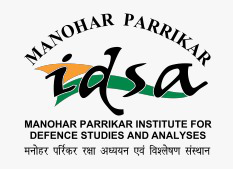Russia’s Arctic LNG: A Potential Alternative for India’s Energy Security
Projects in the Russian Arctic offer India strategic alternatives for the consistent supply of LNG.
Projects in the Russian Arctic offer India strategic alternatives for the consistent supply of LNG.
The Eastern Mediterranean offers India strong prospects for import of natural gas, given strong bilateral relations with regional countries, including Egypt, Israel, Greece and Cyprus.
Energy transition is defined as a structural change in energy balance when some fuels are replaced with others. This process of structural transition, however, does not lead to an ultimate replacement of fuel but a substantial reduction of its share. Liquefied Natural Gas (LNG) is widely considered a transition fuel that will eventually lead to a shift to the renewable energy system. LNG provides an alternative to coal, oil, nuclear energy and pipeline gas, as it helps reduce carbon emissions.
European imports of Russian gas have steadily declined either voluntarily or on account of Russia weaponising energy, propelling the push towards LNG imports.
Nord Stream 2, a Russian undersea gas pipeline project that intends to deliver natural gas from Siberia to Germany, currently sits at an intersection of several geopolitical and geo-economic cross-currents that determine the economic security as well as the geostrategic balance of Europe.
In 2012, the International Energy Agency (IEA) in its ‘World Energy Outlook’ said that the world was entering a ‘Golden Age of Gas’. With its lower carbon-emitting properties, gas seemed poised to claim its rightful place in the global energy mix as a bridge between polluting hydrocarbons and green renewables. Moreover, it has all the ingredients to make it as worthy a contender in the energy geopolitical game as did oil a few decades ago.
The West Asian region is undergoing a phase of massive turbulence since the outbreak of the Arab Spring. This period has been marked by popular protests, internal conflicts, civil wars, military interventions and involvement of external players. The regional security situation remains fragile with a new terrorist entity, the Islamic State, emerging to challenge the existing geographical boundaries of the region. There has been an enormous increase in terrorism and extremism, and the non-state actors have gained significant influence in regional politics.
Turkey’s natural gas reserves are 218 bcf and its production is roughly 27 bcf. It relies heavily on imports to meet its domestic demand. Additionally, Turkey positions itself as a gas transit hub – importing from Russia, Azerbaijan, Turkmenistan and Iran and re-exporting some of it to Europe.
This volume looks at the evolving gas market and the various players who influence it -- both as producers and consumers. However, some of the players, such as Australia and the new African producers, as well as Japan and South Korea, the two largest LNG consumers, have not been included as their approach tends to be more commercial than geopolitical in nature.



